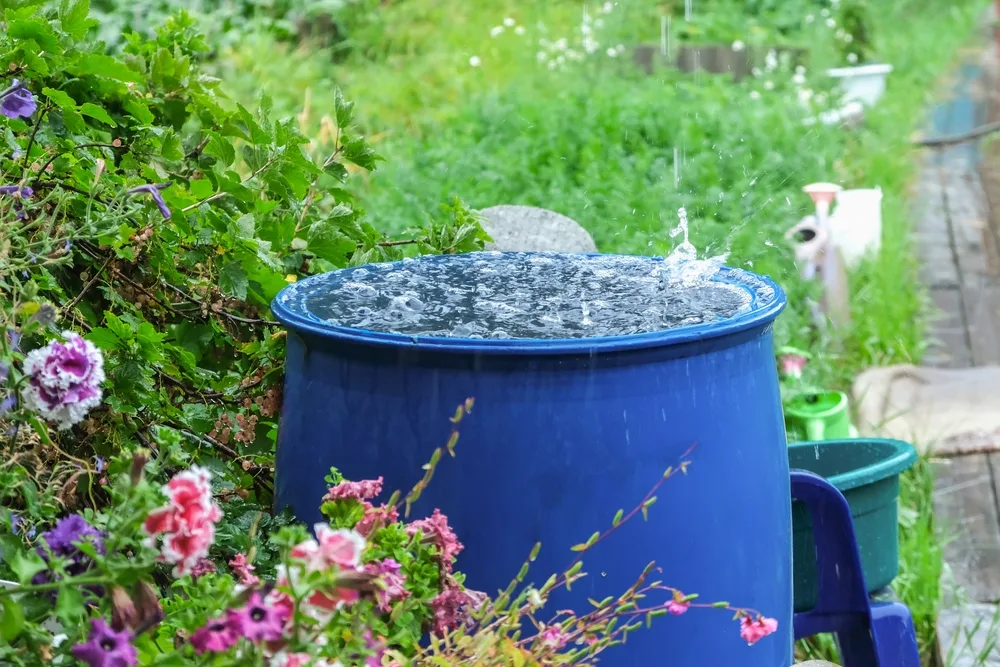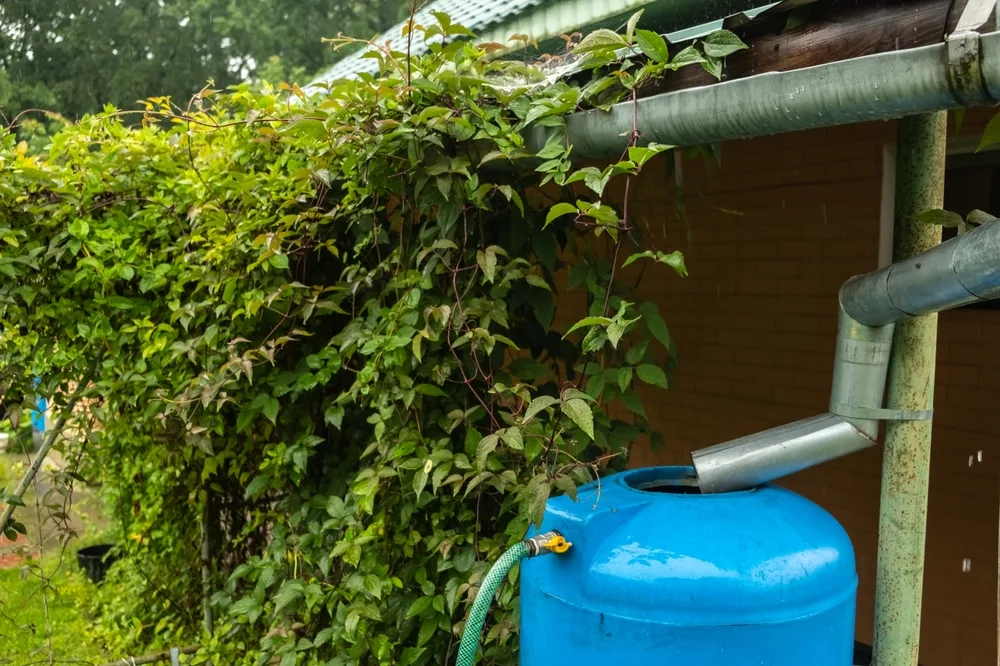
Watching a rainstorm can be a powerful reminder of nature’s force and its nurturing care for all living things.
But have you ever thought about what you can do with all that rainwater? The answer is simple: collect it!
Harvesting rainwater is a smart way to save on your water bill and make use of a natural resource.
Did you know that with just 10 inches of rain falling on a 1,000-square-foot area, you could collect around 6,000 gallons of water per year?
Here’s how you can start harvesting rainwater!
What Is Rainwater Harvesting?
Rainwater harvesting involves collecting and storing rain for later use. You can gather it from your roof using gutters and pipes, directing it into a barrel or tank.
This practice has been around for thousands of years. Ancient civilizations like those in the Indus Valley, Rome, Brazil, and China all used it.
Today, this age-old technique is making a comeback, especially in areas where water restrictions are common.
Why Harvest Rainwater?
Harvesting rainwater has many benefits, making it popular with homeowners, eco-friendly folks, and gardeners.
You can make things easier by connecting your rainwater tank to a drip irrigation system, letting you water your plants with no effort.
With a good filtration system, you can even use rainwater for your livestock, flushing toilets, cooking, and drinking.
Here are some of the key benefits:
- Better Plant Health: Rainwater is great for plants because it doesn’t have chlorine or fluorides, which can build up and cause problems like poor nutrient absorption.
- Water Conservation: By harvesting rainwater, you save on municipal water supplies and have a sustainable option during times of water restrictions.
- Emergency Supply: If there’s a shortage of municipal water, having your own rainwater supply can be a lifesaver.
- Lower Bills: Using rainwater for things like watering plants, flushing toilets, and washing clothes can significantly reduce your water bills.
However, there are some challenges to consider. The initial cost of setting up a rainwater harvesting system can be high, and regular maintenance is necessary to keep the water clean and safe.
Also, drinking rainwater requires proper filtration, which can increase the overall cost.
Things to Consider Before Starting

Before diving into rainwater harvesting, here are a few challenges to think about:
- Initial Costs: Setting up a rainwater system can be expensive, depending on the type and complexity of the system you choose.
- Space: Storage tanks or even simple rain barrels can take up a lot of space, so you’ll need to plan where to put them.
- Maintenance: Keeping the system clean is crucial. This includes regularly cleaning pipes, gutters, tanks, and filters to prevent contamination.
- Filtration: If you plan to drink the water, you’ll need a filtration system, which adds to the initial cost.
How to Harvest Rainwater
You can buy a complete rainwater harvesting system or try a DIY approach. Here are some options:
- Rooftop Rainwater Harvesting: This is one of the most common methods. Collect rainwater from your roof and use gutters and pipes to direct it into a tank or cistern.
- Rain Barrels: The simplest and cheapest way to collect rainwater. Just place a barrel under a downspout to gather the rain.
- Rainwater Tanks: These large tanks can store a lot of water, enough for household use. They cost more but provide a reliable water source.
- Underground Storage Tanks: Bury large tanks underground to collect rainwater. These are ideal for areas with high water demand or commercial use.
- Rain Gardens: A specially designed garden that captures and absorbs rainwater using plants and soil.
- Dry System: In this method, rainwater flows through gutters into a tank, with the gutters drying out between rains.
- Wet System: Here, gutters stay full of water, and the tank is usually located further from the collection area, sometimes even underground.
Using Harvested Rainwater
Once you’ve collected rainwater, it’s time to put it to use.
You can use it for non-drinking purposes like watering plants, flushing toilets, and cleaning, without needing to purify it.
However, don’t drink or cook with it unless you properly filter it, even if it looks clean. Rainwater can contain germs, chemicals, or debris, so proper purification is essential.
Purifying Rainwater
There are several ways to purify rainwater, depending on its quality and intended use.
- Boiling: Boiling water kills harmful microorganisms but won’t remove chemicals or toxins.
- Filtration: Complex filters like carbon or ceramic can remove some germs and chemicals, but may not eliminate all viruses and bacteria. Simple cloth filters only remove visible debris.
- Distillation: This involves boiling water until it evaporates and then condensing it back, removing most pollutants.
- Chemical Treatment: Adding iodine or chlorine can kill bacteria and germs but won’t remove chemicals or toxins and might not work against certain parasites.
- UV Treatment: This method uses UV light to kill germs and is often used in homes with private wells or other water sources.
Is Rainwater Harvesting Legal?
In most U.S. states, harvesting rainwater is legal, but some, like Colorado, Nevada, Utah, Illinois, and Arkansas, have regulations on this practice.
In many cases, it’s encouraged, and in places like Texas, you might even get tax incentives or sales tax exemptions for the equipment you need.
Rainwater harvesting is a great way to save money and help the environment. Just be sure to consider the costs and maintenance involved before starting!
